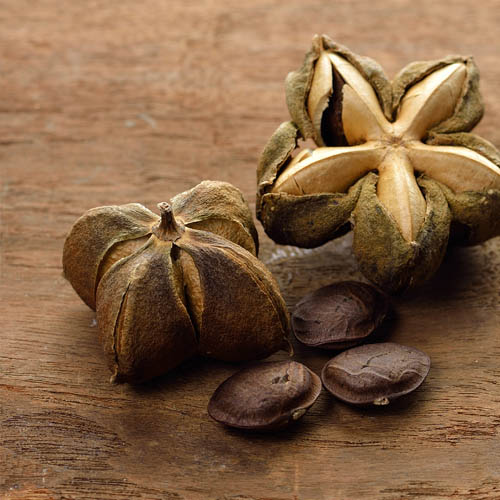Healthhub by SUNWARRIOR
Sacha inchi, also known as the Inca peanut, is the seed of a plant that grows in the highlands of Peru. Despite being a fairly recent discovery in the health community of the United States, sacha inchi has been cultivated and used as a food source for 3,000 years in the Amazon rainforest. The fruit that these seeds grow in is inedible, but when lightly roasted with low heat the seeds take on a crisp nutty flavor.
Sacha inchi is much more than just a pleasant snack food. These seeds are rich in protein, omega 3, 6, and 9, alpha tocopherol vitamin E, carotenoids (vitamin A), and fiber. This superfood is easily digested and unlikely to cause allergies or irritation. The oil is also available. It has a similar flavor to olive oil, just slightly lighter and nuttier, but it contains more protein and omega 3.
Vegans and vegetarians should look into omega 3 rich foods to supply this essential nutrient. There are very few plant foods that supply a decent amount. Sacha inchi now joins purslane, chia seeds, flaxseed, and microalgae as vegan omega 3 superfoods and another way to sneak more healthy essential fats into your life. The studies are thin this early on, but sacha inchi is showing promise in many areas.
1. Cholesterol – Sacha inchi lowers LDL and raises HDL cholesterol. Cholesterol levels may not be the biggest marker for cardiovascular problems we once thought them to be, but they are still a concern and can reflect dietary problems and genetic dispositions toward some diseases.
2. Well Being – These seeds contain a good amount of tryptophan, a precursor for serotonin. Serotonin is a feel-good hormone and neurotransmitter that helps us deal with stress and feel calm and happy. The omega 3 also reduces inflammation in the brain, which can cause mood shifts, headaches, and more.
3. Weight Loss – Higher serotonin levels, thanks to the tryptophan, also regulate appetite so we don’t get cravings, overeat, or snack more than we need to.
4. Brain Health – The majority of our brain is composed of fat. We need good, healthy fats to resupply those cells and to continually fight inflammation. Inflammation in the brain can cause depression, fatigue, memory issues, and exaggerated responses to pain.
5. Heart Health – Sacha inchi improves circulation while lowering blood pressure, cholesterol, and inflammation throughout the body. All of this makes for a healthier, happier, less stressed cardiovascular system, from arteries to heart and beyond.
6. Diabetes – Omega 3 helps control glucose levels. Many doctors and researchers argue that omega 3 may actually reduce insulin resistance in those with type 2 diabetes. Omega 3 also lowers triglyceride levels, which are often high in diabetics.
7. Bone Health – Omega 3s help the body absorb calcium. Foods rich in omega 3 improve bone density, staving off some of the deterioration that occurs as we age.
8. Vision – The vitamin E, vitamin A, and omegas in sacha inchi can improve vision and maintain eye health. Like the brain, the eyes rely on a good amount of fat, and are prone to inflammatory damage, especially as we get older.
9. Joint Health – The anti-inflammatory nature of sacha inchi may make it a good supplement to ease joint pain and rheumatoid arthritis. Consider combining sacha inchi oil with ginger for even more benefits.
10. Skin and Hair – Omega 3 fatty acids are vital to healthy hair and skin. They help us regulate oil production, keep skin elastic, lock in hydration, protect against sun damage, and help repair damage when it occurs.
Claims on this site have not been evaluated by the FDA. Information on this site is not intended to diagnose, treat, cure, or prevent any disease. Sunwarrior’s awesome expert writers do not replace doctors and don’t always cite studies, so do your research, as is wise. Seek the advice of a medical professional before making any changes to your lifestyle or diet.
Sunwarrior likes to share. Please feel free to repost articles as long as you always link back to the original and credit the author.


